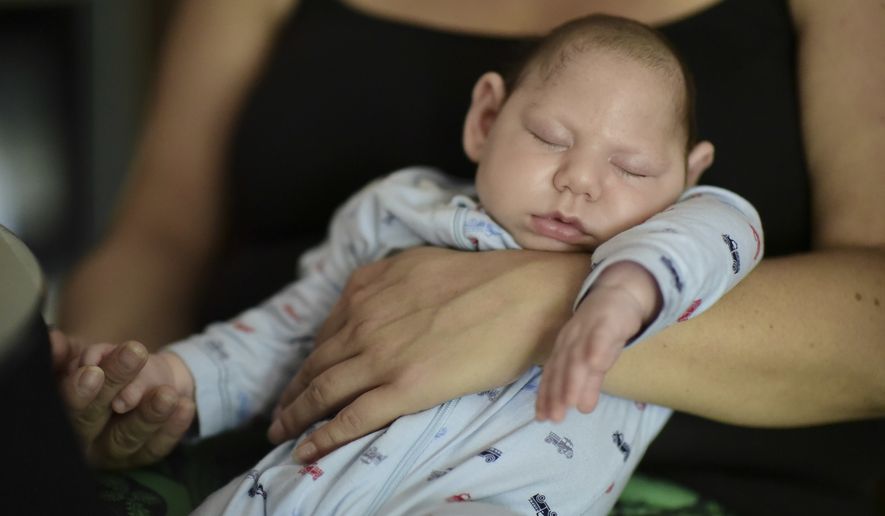The Zika virus roared onto the scene last year as the scourge of the summer, but it’s slinking off the radar as 2017 dawns, having left far less devastation in the U.S. than analysts had warned.
Worldwide, the situation is still dire. Thousands of babies have been born with Zika-related defects in Latin America, though only a few dozen babies have been born with defects in the U.S. Those are chiefly cases in which the mothers or their partners are infected while traveling.
Mosquitoes did infect about 220 people in pockets of Florida and Texas, though Florida now reports its neighborhoods are clean. Texas officials reported a sixth case in Brownsville, near the Mexican border, on Dec. 22, prompting efforts to stamp out further transmission.
Researchers predict a repeat this summer. After years of obscurity in African forests and Oceania, they say, the virus has established itself in the Western Hemisphere.
“I think the bottom line is that Zika is likely to continue to spread in Latin America, the Caribbean and elsewhere in the world for many years, so we need to anticipate that there will be a steady stream of travelers returning with Zika and that we will continue to have the risk of clusters as we had in Miami and Brownsville this year,” said Dr. Thomas Frieden, director of the Centers for Disease Control and Prevention.
After a drawn-out fight, Congress approved $1.1 billion in September to fight outbreaks of the disease and pursue a vaccine.
The Centers for Disease Control and Prevention has begun dispatching nearly $184 million to states, territories, local governments and universities to respond to outbreaks, bolster lab testing and mosquito control, and connect affected families with medical care.
More than 4,500 people became infected abroad before returning to the continental U.S., compared with roughly 220 who acquired Zika within the states, according to CDC figures.
Dr. Frieden said there could be as many as 10 undiagnosed cases for every one that is found, meaning there could be 50,000 infections within the continental U.S. because four out of five people infected with Zika don’t show symptoms.
Puerto Rico is the biggest U.S. trouble spot. The CDC estimated in October that 5,900 to 10,300 pregnant women could have been infected, potentially resulting in 100 to 270 babies born with abnormally small heads, a condition known as microcephaly, by the middle of this year.
Though Zika spreads mainly by mosquito, it can be transmitted sexually. The Food and Drug Administration in late August advised all blood centers in the U.S. to screen donations for the virus to avoid accidental infection.
The FDA says nationwide screenings are working as intended, though it is unclear how long the guidance will remain in place.
The agency has said it will “evaluate this situation in real time” as it receives more information about the epidemic and the effects of its blood protection strategy.
Scientists say the risk of infection in the continental U.S. will recede as winter sets in, though travelers may bring back cases from the Southern Hemisphere and the tropics.
“Mosquito season in the U.S. will certainly be truncated by lower temps, but as we’ve seen in Texas, transmission might not go to zero,” said Michael Kaufman, an associate professor of entomology at Michigan State University, referring to six cases reported near the Mexican border in mid-December.
Mr. Kaufman said transmission should “slow, but not disappear,” in Puerto Rico.
The risk will surge during summers, though techniques to stamp out mosquitoes, including the potential use of genetically modified insects, “may somewhat delimit the spread until an effective vaccine is available,” said Dr. Amesh Adalja, a senior associate at the University of Pittsburgh Center for Health Security.
Voters in the Florida Keys approved a ballot measure that would allow British company Oxitec to release genetically modified Aedes aegypti mosquitoes that produce unviable offspring, slashing the overall population, though residents of the proposed test site — Key Haven — opposed the measure, meaning Oxitec and local officials will have to search for another site that meets federal regulatory requirements.
The World Health Organization is encouraging scientists in Brazil and elsewhere to artificially infect mosquitoes with the Wolbachia bacterium, which has been shown to disrupt mating and the transmission of Zika and related viruses.
A vaccine could be a few years away, though the National Institutes of Health began a human trial of one of its shots in August.
The vaccine uses a piece of DNA, known as a plasmid, to produce a chain reaction in the body that ends with an immune response to Zika. Researchers hope to begin the second phase of the trial early this year in Zika-affected areas of the U.S., including Puerto Rico, and in Latin America.
The agency is supporting phase-one trials of a separate vaccine at three research centers across the country, plus three approaches that are in the preclinical stage.
• Tom Howell Jr. can be reached at thowell@washingtontimes.com.




Please read our comment policy before commenting.